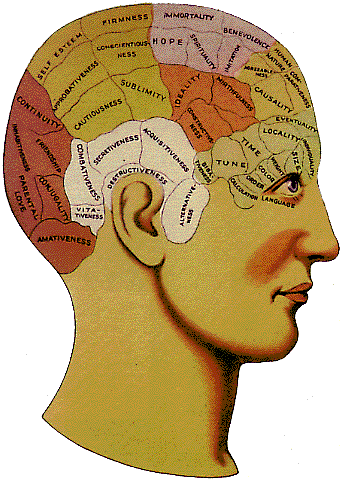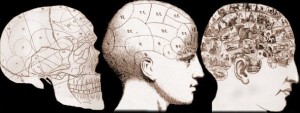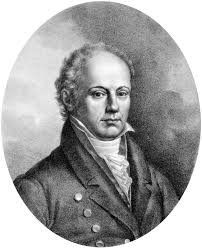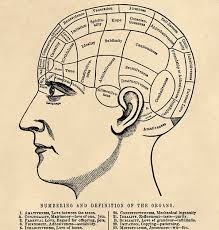What is Phrenology?”
Phrenology is a pseudo-scientific field of study that deals with the measurement of the human skull as it were believed to be an indicator of one’s character and mental abilities.
What does a phrenologist do?
Phrenology comes from Greek word phrēn meaning “mind”, and logos meaning “knowledge”. Phrenology is a pseudomedicine primarily focused on measurements of the human skull. Its basis is the concept that the brain is the organ of the mind, and so certain brain areas have localized specific functions or modules.
Phrenologists felt that these functions could be ascertained by measuring the bumps and indentations in your skull. That is, the shape of your skull revealed your character and talents. 19th-century phrenologists called “the only true science of mind”.

Phrenology is a pseudomedicine primarily focused on measurements of the human skull.
Phrenology in the Victorian era
Phrenology had become popular in the Victorian era during the 19th century. It was during this period when the philosophical and theological understanding of the human mind was started to be questioned by the general public.
One main reason was that they had deemed such understanding to be inappropriate to the changing and industrializing social condition of the society. However, during the early period of the Victorian Era Phrenology, many perceived Phrenology as legitimate.

Phrenology, as a field of inquiry, was based on the research of Viennese Physician Franz Josef Gall and was later on popularized by Johann Gaspar Spurzheim in Europe. In 1820, Edinburgh Phrenological Society, the British center for Phrenology, was established.
Tenets of Gall’s Theory

Phrenology originated from the theories of Franz Josef Gall (1758 – 1828) and was often criticized as a pseudo-science. Nonetheless, these early researchers and conceptions of Gall became the early foundation of psychology as an advent of a naturalistic and scientific methodology of the study of man.
It further contributed to various revolutionary ideas such as the theory of evolution, sociology, and anthropology among many others.
Here are following ideas of Gall about the human mind as they became the basic tenets of Victorian Era Phrenology.
- The brain is the mind’s organ.
- The mind is constituted of many separate faculties, which are mainly distinctive.
- Since they are independent, each and every faculty must have a distinct location or organ in the brain.
- The measurement of the organ is equivalent to its power.
- The size of the organ determined the shape of the brain.
- Since the shape of the brain follows the measurement of the skull, the skull can be perceived as an accurate model of human’s psychological abilities that comprise personality, intellect, and mental tendencies.
All in all, these notions became the basis of Phrenology during the Victorian era.
Phrenology and Victorian life

During the earlier part of the Victorian period, around the 1820s – 1840s, businessman and employers alike required prospective employees a character reference from a local phrenologist. This demand was to ensure that the employee would not only be honest and hardworking but also mentally and psychologically healthy to fit the job.
It was seen to be an effective way to match people’s personality and talent to their destined jobs and careers. Further, phrenological tests were believed to be efficient countermeasures against potential criminals that needed state and civil reforms.
Phrenology was similar with consulting advice from astrologers, psychics, and clairvoyants, among others. Indeed, phrenologist – those who claim to have a special understanding and knowledge of people – easily deceived ignorant and gullible as they were vulnerable to their pretensions.